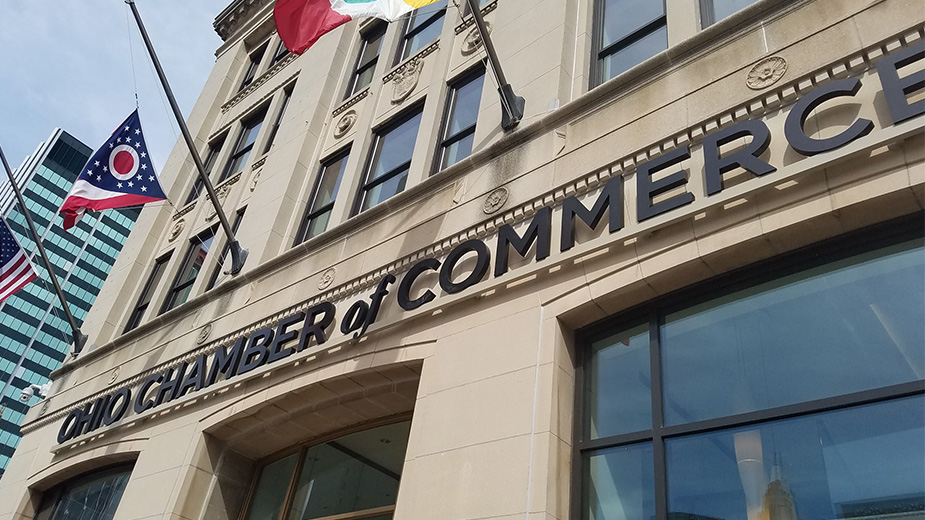Ohio Chamber Presents Theft Findings, Recommendations
COLUMBUS, Ohio – After a report released by CBS News on the “Deadliest U.S. Cities,” which included five in Ohio, the Ohio Chamber of Commerce decided to conduct a survey of its membership and other Ohio business owners on the effect of public safety on their businesses.
The Ohio Chamber’s Crime Task Force on Friday presented its findings and legislative recommendations.
The survey revealed that 62% of the Ohio business community believes rising crime has kept businesses from expanding.
“Public safety is a top priority for the Ohio Chamber,” said Steve Stivers, Ohio Chamber president and CEO. “None of the other work we’re doing to strengthen our state’s economy matters if people are afraid to live, work and start businesses in Ohio communities.”
The Ohio Chamber formally rolled out its Crime Task Force in June, aiming to address the issues and responses raised in the survey and discuss possible solutions to increase security and growth of Ohio businesses. Based on the survey’s findings, the task force focused first on the issue of retail theft.
The U.S. Chamber of Commerce reported that 3.59% of all U.S. retail crime in 2021 took place in Ohio. According to the Ohio Council of Retail Merchants, retail theft costs Ohio businesses about $2 billion to $3 billion each year.
The task force pulled together representatives of the retail community along with state and county law enforcement officials and was led by former U.S. Attorney David DeVillers of Barnes & Thornburg LLP and retired Judge Scott VanDerKarr. The group met periodically throughout the summer and early fall to discuss criminal justice reforms, prosecutorial authority and new or enhanced penalties to produce recommendations for the Ohio General Assembly.
“Retail crime continues to be one of the top challenges facing our industry today,” said Bryan Lindsay, major crimes investigations manager at Walgreens. “We are focused on the safety of our patients, customers and team members, and have programs in place to reduce organized retail theft in our stores. We also continue to partner with others across the retail industry, as well as law enforcement, elected officials and community leaders to improve shrink trends.”
The Crime Task Force’s recommendations include:
- Creation of an organized retail theft task force housed under the existing Organized Crime Investigations Commission within the Ohio Attorney General’s Office.
- Ensure adequate funding for the task force, amounting to $1.5 million in the first year of existence and then $1 million annually.
- Modified definitions under Ohio Revised Code relating to both “Organized Retail Theft” and “Retail Property Fence.”
- Modification of the rules regarding aggregation and common scheme under Ohio Revised Code 2913.61. Currently, if a person steals from multiple victims, the value of the theft can be aggregated only in specific circumstances. If there is a “common scheme to defraud” or theft occurs from the elderly or disabled, aggregation across multiple unrelated victims is permitted. Currently, if a person steals from three stores in the same strip mall within a few minutes, it is not permissible to aggregate crimes. The individual can be charged with three first degree misdemeanor petty theft offenses but cannot be charged with a single aggregate felony theft. This could potentially be fixed in statute by:
- Allowing aggregation from multiple retail victims within a fixed time period (i.e. same day, week, month, continuing course of conduct, etc.).
- Allowing aggregation when certain factors indicative of organized retail theft are present.
- Allowing aggregation in theft cases regardless of whether it involves a common scheme or involves a protected victim.
- Enabling cross-jurisdictional prosecution:
- Provide county prosecutors with a six-month period to make decisions to prosecute retail theft.
- Offer support by the Ohio Attorney General’s Office as co-chair or co-counsel on cases.
- Give the Ohio Attorney General’s Office full jurisdiction after six-month period elapses, but only if county prosecutors have not otherwise proceeded.
- Creation of an organized retail theft statute that bridges the gap between shoplifting and RICO.
- Creation of a statute that imposes criminal liability on resellers of stolen property, or make it clear that Ohio’s Receiving Stolen Property statute (ORC 2913.51) also applies to all resellers such as online marketplaces, auction houses, secondhand stores and pawnbrokers.
- Creation of mandatory reporting requirements for certain resellers.
- Creation of mandatory sentencing requirements for organized retail theft.
Pictured at top: Photo via Facebook | Ohio Chamber of Commerce.
Published by The Business Journal, Youngstown, Ohio.



